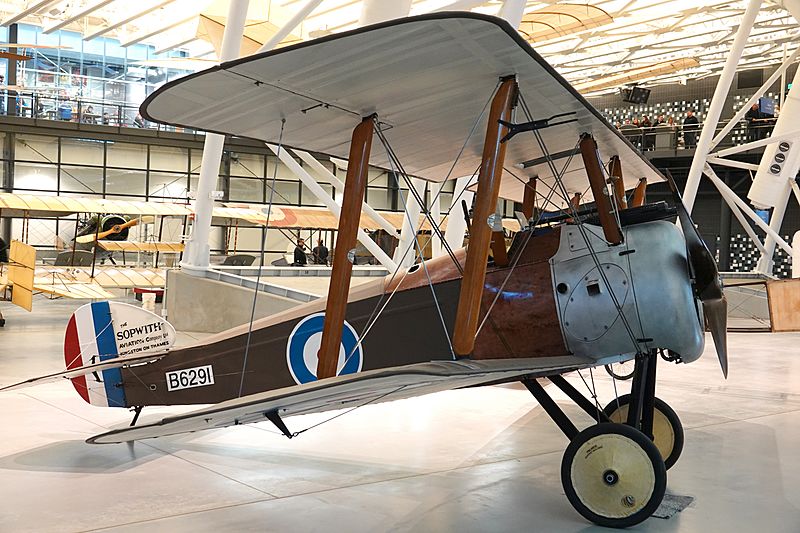Image: 1917 Sopwith F.1 Camel

Description: The Sopwith Camel is among the most significant and famous of all WWI aircraft. Camels downed 1,294 enemy aircraft, more than any other Allied fighter in WWI. The name Camel, while not an official military designation, refers to the distinctive “hump” created by the cowling over the two Vickers machine guns ahead of the cockpit. Unlike Sopwith’s earlier Pup and Triplane, which were docile to fly and well-liked by pilots, the Camel was unstable, requiring constant control input. Pilots initially found the Camel challenging and dangerous. The controls were sensitive, and it could turn tightly because much of the weight, including the engine, fuel, machine guns, and pilot, was ash the front of the airplane. The gyroscopic effect of the powerful rotary engine also contributed to its maneuverability. Almost as many pilots were killed in accidents as died in combat flying the Camel. But once its tricky characteristics were mastered, the Camel was a superior fighting airplane. The Camel entered operational service in July 1917 and remained a front-line fighter until the end of the war, with approximately 5,490 built. This example, B6291, served with No. 10 squadron of the Royal Naval Air Service. -- Gifted to the Smithsonian by the Arango Family with gratitude and appreciation. Specifications: Wingspan: 8.5 m (28 ft) Length: 5.7 m (18 ft 9 in) Height: 2.6 m (8 ft 6 in) Weight, empty: 422 kg (930 lb) Weight, gross: 659 kg (1,453 lb) Engines: Clerget 9B rotary, 130 hp Manufacturer: Sopwith Aviation Co., 1917
Title: 1917 Sopwith F.1 Camel
Credit: Own work
Author: Sanjay Acharya
Usage Terms: Creative Commons Attribution-Share Alike 4.0
License: CC BY-SA 4.0
License Link: https://creativecommons.org/licenses/by-sa/4.0
Attribution Required?: Yes
Image usage
The following page links to this image:

